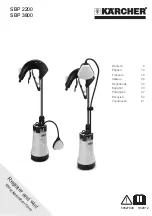
SERVICING
85
S-115 COMPRESSOR BURNOUT
When a compressor burns out, high temperature develops
causing the refrigerant, oil and motor insulation to decom-
pose forming acids and sludge.
If a compressor is suspected of being burned-out, attach a
refrigerant hose to the liquid line dill valve and properly remove
and dispose of the refrigerant.
NOTICE
Violation of EPA regulations may result in fines
or other penalties.
Now determine if a burn out has actually occurred. Confirm
by analyzing an oil sample using a Sporlan Acid Test Kit, AK-
3 or its equivalent.
Remove the compressor and obtain an oil sample from the
suction stub. If the oil is not acidic, either a burnout has not
occurred or the burnout is so mild that a complete clean-up
is not necessary.
If acid level is unacceptable, the system must be cleaned by
using the clean-up drier method.
CAUTION
Do not allow the sludge or oil to contact the skin.
Severe burns may result.
NOTE:
The Flushing Method using R-11 refrigerant is no
longer approved by the manufacturer.
Suction Line Drier Clean-Up Method
The POE oils used with R410A refrigerant is an excellent
solvent. In the case of a burnout, the POE oils will remove any
burnout residue left in the system. If not captured by the
refrigerant filter, they will collect in the compressor or other
system components, causing a failure of the replacement
compressor and/or spread contaminants throughout the
system, damaging additional components.
Install a field supplied suction line drier. This drier should be
installed as close to the compressor suction fitting as pos-
sible. The filter must be accessible and be rechecked for
pressure drop after the system has operated for a time. It may
be necessary to use new tubing and form as required.
NOTE:
At least twelve (12) inches of the suction line
immediately out of the compressor stub must be discarded
due to burned residue and contaminates.
1. Remove compressor discharge line strainer.
2. Remove the liquid line drier and expansion valve.
3 Purge all remaining components with dry nitrogen or
carbon dioxide until clean.
4. Install new components
including
liquid line drier.
5. Braze all joints, leak test, evacuate, and recharge system.
6. Start up the unit and record the pressure drop across the
drier.
7. Continue to run the system for a minimum of twelve (12)
hours and recheck the pressure drop across the drier.
Pressure drop should not exceed 6 PSIG.
8. Continue to run the system for several days, repeatedly
checking pressure drop across the suction line drier. If
the pressure drop never exceeds the 6 PSIG, the drier has
trapped the contaminants. Remove the suction line drier
from the system.
9. If the pressure drop becomes greater, then it must be
replaced and steps 5 through 9 repeated until it does not
exceed 6 PSIG.
NOTICE:
Regardless, the cause for burnout must be deter-
mined and corrected before the new compressor is started.
S-120 REFRIGERANT PIPING
The piping of a refrigeration system is very important in
relation to system capacity, proper oil return to compressor,
pumping rate of compressor and cooling performance of the
evaporator.
POE oils maintain a consistent viscosity over a large tempera-
ture range which aids in the oil return to the compressor;
however, there will be some installations which require oil
return traps. These installations should be avoided whenever
possible, as adding oil traps to the refrigerant lines also
increases the opportunity for debris and moisture to be
introduced into the system. Avoid long running traps in
horizontal suction line.
ALUMINUM INDOOR COIL CLEANING
(Qualified Servicer Only)
This unit is equipped with an aluminum tube evaporator coil.
The safest way to clean the evaporator coil is to simply flush
the coil with water. This cleaning practice remains as the
recommended cleaning method for both copper tube and
aluminum tube residential cooling coils.
An alternate cleaning method is to use one of the products
listed in the technical publication
TP-109 (shipped in the
literature bag with the unit)
to clean the coils. The cleaners
listed are the only agents deemed safe and approved for use
to clean round tube aluminum coils. TP-109 is available on the
web site in Partner Link > Service Toolkit.
NOTE:
Ensure coils are rinsed well after use of any chemical
cleaners.









































